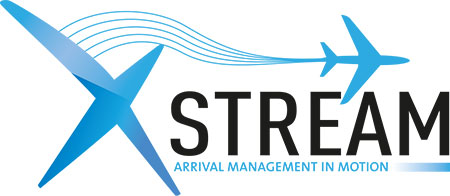Close to 200 commercial inbound flights handled by DSNA to Paris-Orly airport have successfully tested the xStream procedure of extending the arrival management horizon up to 250 nautical miles. The trials were conducted in August during the maintenance work of the North runway and showed promising first results in terms of flight efficiency.
xStream (cross-border SESAR trials for enhanced arrival management) is a project led by DSNA, the French air navigation service provider, in collaboration with its partners : COOPANS, DFS, EUROCONTROL, NATS, skyguide ; SEAC (SESAR European Airports Consortium) ; AT-One and Indra. xStream is one of several large-scale demonstration activities of SESAR 2020, aiming at delivering ready-to-be operational, innovative solutions.
The xStream project builds on the award winning SESAR demonstration project ‘iStream’, which showed the ATFCM (Air Traffic Flow and Capacity Management) benefits of using target time of arrival (TTA) at congested airports. With extended arrival management (E-AMAN), the flow manager is able to make an early plan of what the arrival sequence will be, and controllers manage arrival delays tactically during the cruising phase of the flight. With greater anticipation and predictability on the arrival sequence, the objective of E-AMAN is to enable delay absorption earlier in the flight, at higher altitude, improving the arrivals fuel efficiency. The E-AMAN is a key component of the first package of functionalities of the European regulation called Pilot Common Project (PCP). The xStream project now aims at further enhancing target time, ATFCM and E-AMAN queue management processes.
The North runway resurfacing work at Paris-Orly airport during this summer generating a reduction of the arrival capacity was a great opportunity to evaluate the tactical arrival management operations extended up to 250 nautical miles from the airport. The collaborative E-AMAN process was implemented between Orly Approach, Paris and Bordeaux Area Control Centres, with the objective of smoothing the morning arrival traffic peak and mitigating controller’s workload in the terminal area (TMA) by reducing vectoring and holding. Between July 25th and August 28th 2017, period in which French air navigation services controlled more than 10,000 flights per day on average, almost 200 inbound flights to Paris-Orly, from all airlines, were given speed reduction from the North of Bordeaux (South-West) and Lyon (South-East), almost twice the current AMAN horizon. First results showed a strong decrease in vectoring and holding time compared to the similar 2016 runway works period. The project received positive feedback from en-route and approach controllers and airspace users regarding the relevance and the efficiency of this new process.
The next xStream exercise is planned for London-Gatwick in 2018 and will aim to demonstrate single-runway E-AMAN operations taking into consideration departure demand.

